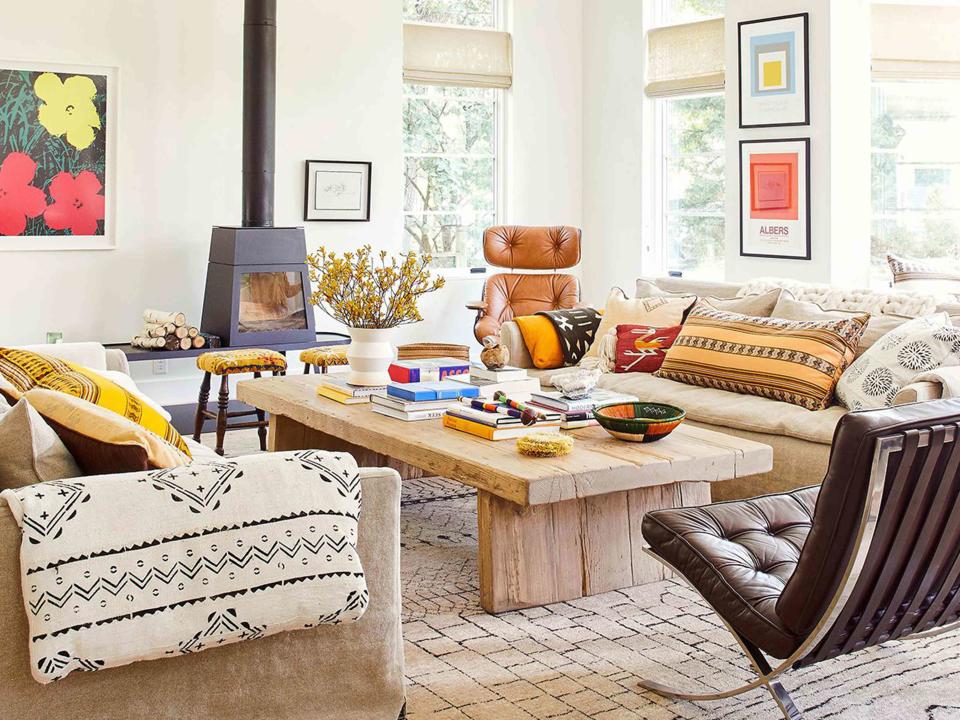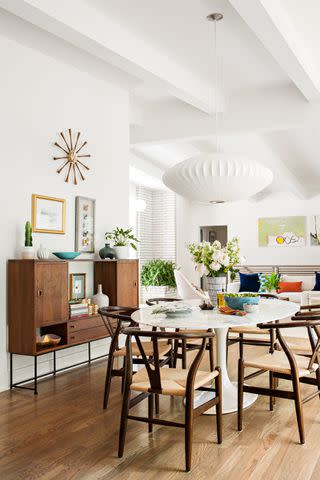How to Know if You're a Midimalist (or if You Should Be)
If you've never related to maximalism or minimalism, this interior design style is for you.

Kim Cornelison
Since the beginning of interior design, people have debated maximalism vs. minimalism. But what if you've never felt connected to either? Well, your time has finally come: Midimalism is here. Like Goldilocks, who found contentment in the in-between space of “just-right,” this aesthetic keeps some of the excitement of maximalist design while also leaning into the calming aspects of minimalism.
A recently-coined term (also known as "middlemalism" on TikTok), midimalism is pretty much what it sounds like: It blends both interior design styles without going too extreme in either direction.
"It takes elements from a minimalist approach—for sleek lines, order, and an uncluttered environment with a select few pieces—but also uses cues from maximalism that features bold color and pattern," Lucy Mather, design expert at Arighi Bianchi, told Ideal Home.
How to Know if Midimalism Is for You
So, how do you know if you’re a midimalist? Do you think patterns are a must but don't believe in mixing them? Do you enjoy color but only in small doses? Do you love displaying collectibles but only if they're organized? If you said “yes” to any of these, you fit the description.
Related: 20 Transitional Living Room Ideas for a Timeless Look
Using midimalist design isn't complicated—the key is striking a balance between the bold and subtle. Start with neutral wall colors to act as a backdrop for your more lively accents: Taupes, grays, creams, and whites are all classic options. Darker hues lean trendier, and lighter shades feel more traditional.

Anthony Masterson
When adding pattern to a midimalist room, limit the number to no more than three or four. And when it comes to your larger pieces (sofas, bedspreads, tablecloths), they shouldn't be too loud: Think gingham or florals, with simple color schemes. You can also incorporate playful prints with an area rug—a tone-on-tone design with plenty of texture is eye catching but not over the top.
Related: The Colorful Minimalism Trend Will Give You the Best of Both Worlds
The most significant difference between minimalism and midimalism: the use of accents and accessories. While minimalism discourages any distractions from its simplicity and clean lines, midimalism allows for more personality with colorful books, a gallery wall, and other items that make a space feel like home. And while maximalism would call for an eclectic mix of thrifted knick knacks everywhere, midimalism keeps the clutter to a minimum (although a maximalist would never refer to it as "clutter").
Goldilocks knew right away when she found the perfect chair, perfect bed, and perfect porridge. You’ll know, too, when your decor feels “just right” that you’ve found a midimalist design scheme that works for you.
For more Better Homes & Gardens news, make sure to sign up for our newsletter!
Read the original article on Better Homes & Gardens.

